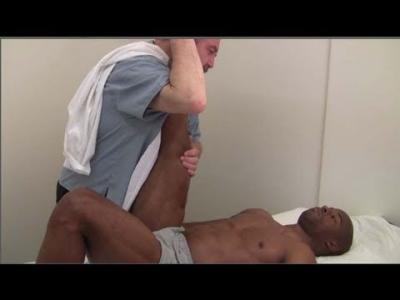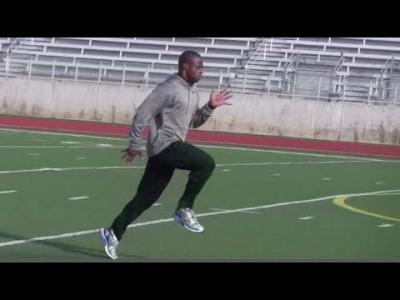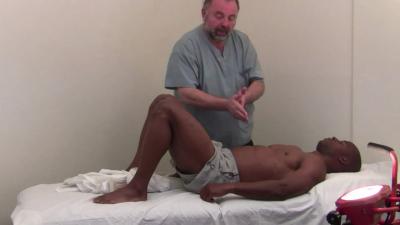Continued Education with Medical Massage and Sports Massage
Introductory
My name is Boris Prilutsky. For over 40 years I have been teaching and practicing Medical and Sports Massage protocols. For over 20 years I have been practicing and teaching medical and sports massage in the United States. I am approved by NCBTMB as a continuing education provider to teach Medical Massage and Sports Massage protocols.
The article is a result of many previous discussions with American practitioners and the following material includes questions and opinions of practitioners who have participated in these discussions. Please note that in these articles I will use terminology and questions as it was presented by other practitioners.
What is Medical Massage? How different it is from “regular” massage? How does it relate to other manual therapy disciplines and sciences like Chiropractic medicine and science of Kinesiology? What is its methodology of studying? I will attempt to answer in this article.
Is “Medical Massage” Simply A Buzz Word?
Many therapists are confused about the term “medical massage.” On one extreme they think that in order to perform medical massage they have to be certified or do ultra-clinical work. On the other extreme there is a notion that “medical massage” is no different from a “regular massage” and that “medical massage” is just a buzz word.
It so happens that I was the first person, in the US, to introduce the term Medical Massage and gave a real definition to a term Sports Massage. I did it not do this intentionally, but it happened simply because I didn’t know of any other one. In the former Soviet Union, I was trained to perform Medical Massage and Sports Massage.
The term Medical Massage was proposed by the founder of this method professor of medicine Sherback. Lately Dr. Glezar and Dr. Delicho published a text book ”Segment Reflex- Medical Massage.” Starting from the third edition of this book the title remained only “Medical Massage.” As you can see this is not buzz word, but has historical scientifically-based roots.
Honestly, I don’t know what “regular massage” means. To me this phrase does not define any methodology and therefore is confusing. One of my friends in a discussion group clarified that what most Americans regard as “regular massage” is more properly called Swedish Massage. This is the most common form of Massage Therapy in the West, mostly related to Spa or Wellness marketing paradigm. In any case, massage therapy and medical massage have the same meaning; which is “providing therapy by means of massage.”
The Medical Massage Therapy field comprises a variety of disciplines. One of them, for example, orthopedic massage, which protocols are designed and utilized to treat sports and job related injuries, and degenerative diseases of support and movements system. I am not sure if you have to be certified in order to practice orthopedic massage. I am positive, however, that if one is not properly trained in performing treatments for painful orthopedic disorders, they shouldn’t even touch clients, sustaining these disorders, but rather should refer these clients to a therapist who is trained in this discipline.
Massage Therapy Is To Kinesiology As Medical Massage Therapy Is To Chiropractics?
Often this question has been raised in many of the massage groups where I participated. I think this question is an attempt to further define Medical Massage and see where it fits within customary “Western” educational concepts. The question is asked in a format that attempts to view Massage Therapy as some subset of Kinesiology and Medical Massage Therapy as a similar subset of Chiropractic Therapy.
If we look back in history, massage therapy is a much older health care practice than either Chiropractic or Kinesiology. As for methodology and conceptually, Chiropractic or Kinesiology were stemmed from massage therapy.
Massage Therapy utilizes and incorporates active and passive movement in our treatment, including stretching. Fast and a slightly forcible movement is a base of chiropractic adjustment. So all these disciplines are related. It’s a different matter whether it is possible to establish strict logical relationships, as it stated in the title of this section.
Kinesiology is a science of movement. Massage, in its broad sense, is a physical methodology of treatment that primarily involves soft tissue mobilization. To some degree it is an application of Kinesiology, especially when it comes to utilization of active and passive movement. At the same time massage operates within the area of knowledge that isn’t directly connected with movement. Some instances are blood and lymph circulation, electrical activities in body, strain and sprain and its sources, cell nurturance and gas exchange, other types of energy work on elementary and psychological levels. This variety and the relativity of this data puts Massage Therapy and Kinesiology in a relationship of partially overlapping protocols.
The Greek word ”chiro” means hand and “practice” means therapy. Massage therapists also provide therapy with their hands, but conceptually and as for physical applications, chiropractic and massage therapy are very different. For instance, in the case of a facet joint subluxation, chiropractors applying adjustment, which is not a part of massage therapist’s scope of practice. However, massage therapy can play very significant role in chiropractic medicine. So again Medical Massage and Chiropractic have overlapping protocols. Both have commonalities where as each discipline covers different sections of medical practice.
So, I would say that the logical relationship shown above cannot be factually supported with 100% accuracy. Therefore, it may lead a massage therapist into making logical conjectures and away from very practical/clinical knowledge that is so necessary for a massage therapy practitioner in order to help people.
Keep It Simple
Currently there’s much discussion in the massage therapy community:
A. Whom among practitioners should be allowed to call themselves medical massage therapists?
B. How many hours of training should be required?
C. Is national certification necessary?
Many colleagues are calling for at a minimum of a college degree, in order to be a massage therapist and/or the inclusion of hundreds of hours of anatomy and physiology training.
In my opinion, we should keep it simple. I graduated from two professional schools, and like any academician, was overloaded with anatomy, physiology and pathology studies. Being in practice for more than thirty years, I would argue that pure memorization of gross anatomy and physiology (including dissection sessions in an anatomical theatre) that takes place in college and graduate school, is hardly useful in daily practice.
I once asked a well known cardiologist with more than thirty years of clinical experience, to answer descriptive anatomy questions on the names of bones, ligaments, and the muscles of the foot. Not having the answer to my questions he said, “Boris, what do you want? The last time I was involved in this kind of anatomy was when I took the National Board Exam, but in my daily practice, I am dealing with pathologies of the heart.”
Similarly, I asked orthopedic surgeons with many years of experience to name the anatomical composition and electrophysiology of the heart. In most cases, they also had difficulty in completing this task. Again, this is because in daily practice, they do not need this kind of knowledge.
I would like to summarize my conclusion by quoting the words of Sherlok Holmes,
“…a man’s brain originally is like a little empty attic, and you have to stock it with such furniture as you choose. A fool takes in all the lumber of every sort that he comes across, so that the knowledge which might be useful to him gets crowded out, or at best is jumbled up with a lot of other things so that he has a difficulty in laying his hands upon it.
Now the skillful workman is very careful indeed as to what he takes into his brain-attic. He will have nothing but the tools which may help him in doing his work, but of these he has a large assortment, and all in the most perfect order. It is a mistake to think that that little room has elastic walls and can distend to any extent. Depend upon it there comes a time when for every addition of knowledge you forget something that you knew before. It is of the highest importance, therefore, not to have useless facts elbowing out the useful ones.”
Two of the most difficult pathologies of the support and movement system are sciatic nerve neuralgia and thoracic outlet syndrome. In many cases, these pathologies are treated by performing surgery. However, very often, they are the result of muscular syndromes. For example, thoracic outlet syndrome is the result of over-tensed anterior scalene muscles that compress the brachial plexus as well as the subclavian artery and vein. This evokes a difficult neurological phenomenon, radiating pain to the upper extremities, and obstructed vessels, which add to the pain, color change. The anterior scalene muscles originate from the transverse processes of C3-C6 and insert into the first rib.
The space between the anterior and middle scalene is called the outlet. As you can see, it takes very little to teach the anatomy and pathology of a condition, such as the one we just covered. It doesn’t take 100 classroom hours to learn. What is important in continuing education training, and the Medical Massage instructional medical massage educational videos emphasize this point, is explaining how to perform medical massage protocol safely and in proper sequence.
This includes connective tissue massage, muscular mobilization (myofascial alliance release), and trigger point therapy. If the aforementioned protocols are carefully performed, it is possible to achieve rapid and sustained results in pathologies, such as sciatic nerve neuralgia, thoracic outlet syndrome and many others.
Today, the massage therapy industry is booming. The general public spends $5 billion annually on massage therapy. Many recent surveys indicate that massage therapy is one of the most effective methods in the treatment of back disorders, stress management, etc. Interestingly, all these survey results have been obtained while monitoring massage therapists, who do not have a college degree in massage therapy. They received their training in massage therapy schools.
Make no mistake, I do support systematic education in massage therapy, but feel this education must be much more practical than the one offered in college. Massage therapists must have hands-on skills to deliver results, such as, less pain, greater range of motion, and less stress related side-effects like anxiety, depression, and high blood pressure. They have to understand the structure, rather than just mechanically memorize anatomical names and terms. Most importantly, it is to understand what every second of touch causes.
My grandfather was an MD, Ph.D., and massage therapist. In Eastern European countries, it was a common practice to find medical doctors with training in medical massage. They incorporated hands-on treatment with other conventional medical treatments. More than once my grandfather told me, “Boris, look at the simplicity and beauty of these methods. When it comes to delivering results, I have to let my hands make a difference.”
It is because of the simplicity of these therapeutic methods and their significant therapeutic power, that I passionately love massage therapy. When I teach workshops, or while instructing in my medical massage medical massage educational video series, I keep it simple and teach the material in a practical way that incorporates my more than 4 decades of clinical, academic and research experience. I hope that as practitioners you will find my instructional material to be a good source of education in the medical massage therapy field.
Summary
Success in our career depends on our ability to deliver results. Therapies by means of massage is about results, such as less pain, greater range of motion, less anxiety, better quality of sleep, etc. I believe continued education programs have to be conducted and delivered in the way that after attending live seminars or after to studying home program, a student will be able to apply his/her newly acquired skills on clients immediately. At my continued education program I’m not just teaching techniques but most importantly sharing with you my many years of clinical experience in how to deliver results. All protocols that I am teaching I am implementing for many years almost on daily basis.
The following video clips are testimonials from World Champion Sprinter Rodney Martin.
These techniques, I teach on my instructional video#7. What happened with this athlete is the living proof of what I have said. To hear the summary of my view on the home CE programs please watch video:
Looking forward to sharing my knowledge with you,
Thank you for your time.
Best Wishes,
Boris Prilutsky








